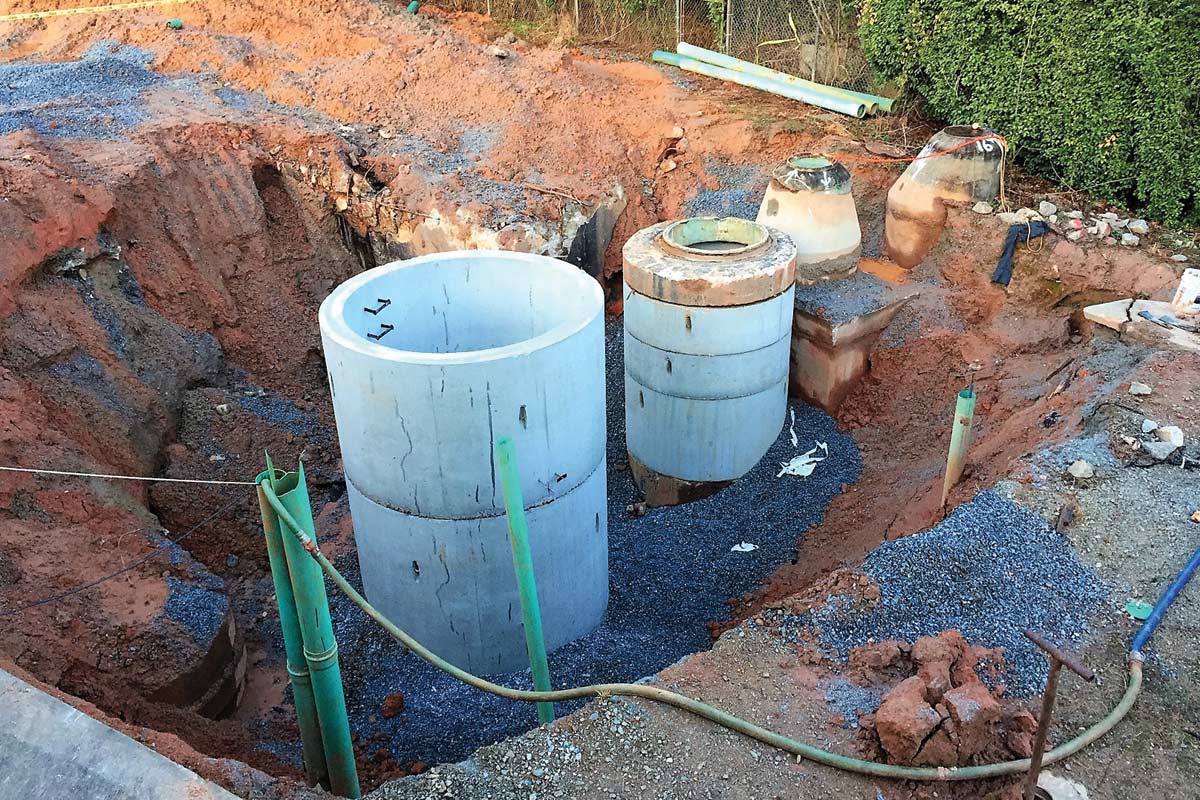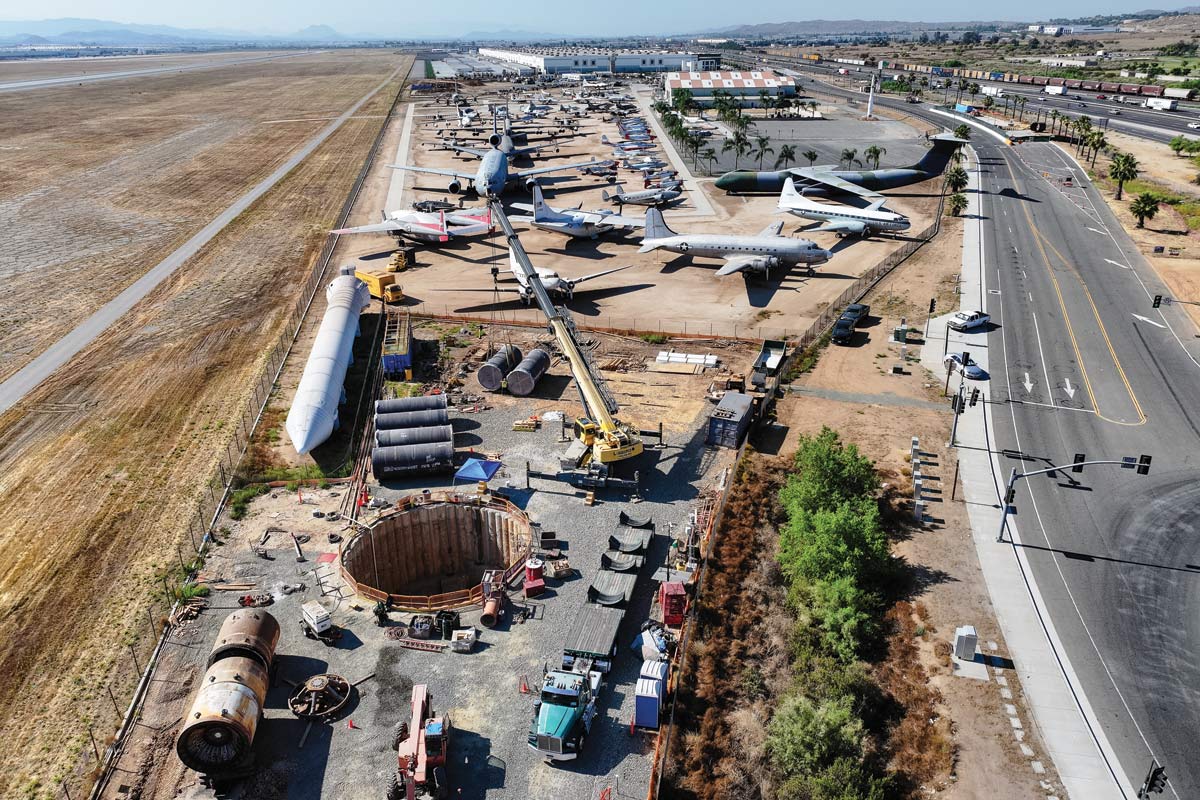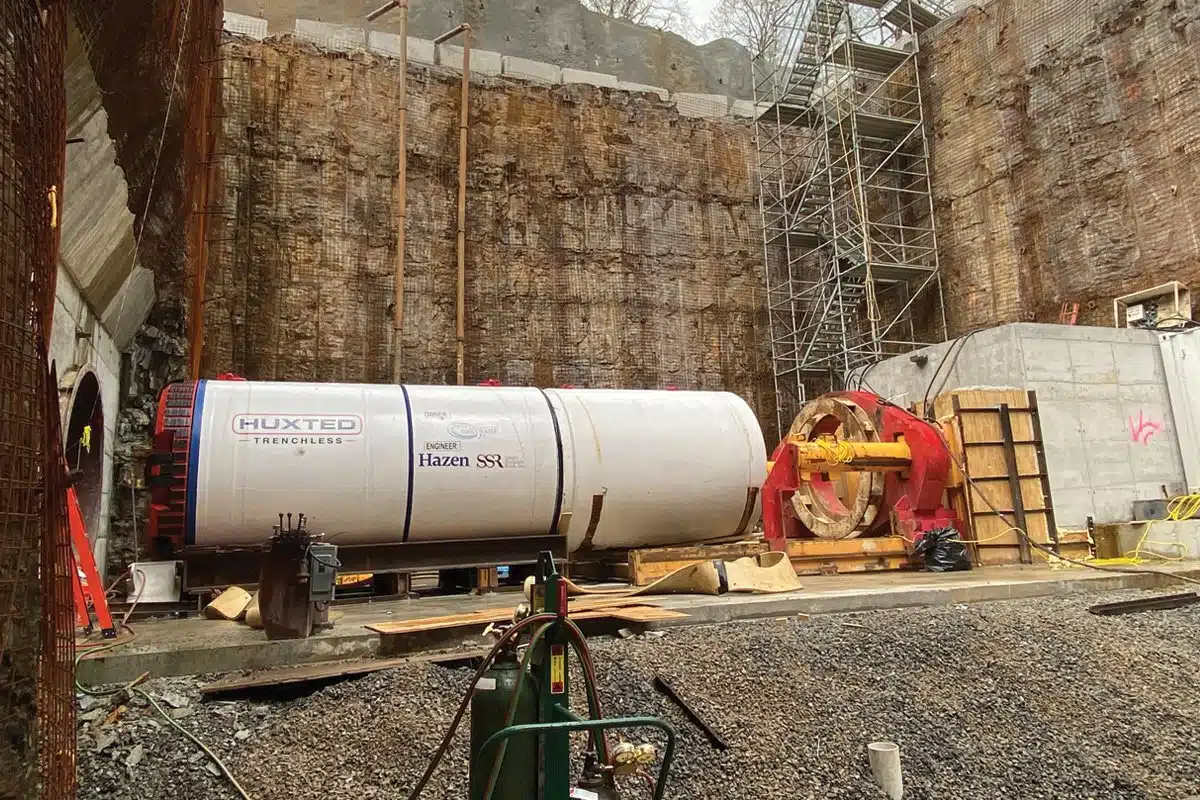
Shining a Light on the Use of Trenchless Technologies in Water, Sewer Systems
There are three main cogs in the world of trenchless technology. You have the contractors who do the work and the engineers who design the projects. The third main cog is the system owner that a project is for.
As the federal government looks to pump more money into infrastructure improvements across the country, trenchless technologies are poised to play a pivotal role. It’s the system owners that make the decisions on whether trenchless technologies are greenlit and have to find the avenues to pay for the rehabilitation and/or new installation work. In some instances, owners are still reluctant to give the thumbs up to a trenchless repair or installation, for any multitude of reasons.
In this issue we’ve dedicated several pages to offer a look at several sewer and water system owners, with a focus on the scope of their overall system and the way that they use trenchless technologies. Taking part in this feature are: Great Lakes Water Authority (Detroit, Michigan), Houston Public Works (City of Houston), Richland County Utilities (Richland County, South Carolina) and Metro Water Recovery (Denver, Colorado). The goal is to offer insight from their perspective, giving you a glimpse into what they believe are the benefits and, in some cases, challenges associated with the use of trenchless technologies.
From these system owner profiles, two things are pretty clear. Increased discussions about, and funding for, infrastructure at the state and federal levels is a welcome change of pace for a sector – underground infrastructure – that is often second fiddle to more visible and photogenic aboveground assets. With that increased focus, the industry needs to step up and be ready for the work when it comes. Because all of the owners agree, that a lack of qualified contractors is one of the things hampering future growth and making present day work even more of a challenge.
Sharon M. Bueno is the editor of Trenchless Technology. Mike Kezdi is the managing editor of Trenchless Technology.
Metro Water Recovery | Denver, Colorado
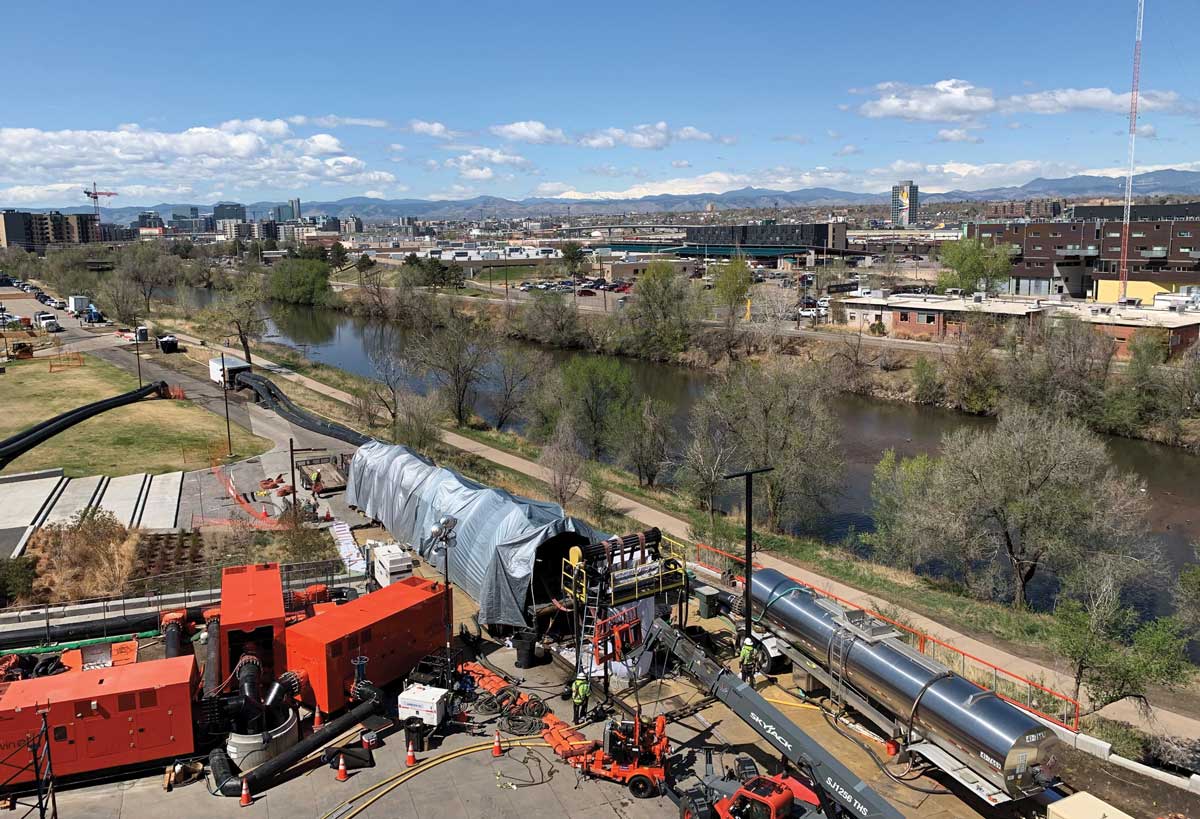
Having a proactive mindset with regards to its under and aboveground assets has paid off for Metro Water Recovery in Denver.
Metro Water Recovery (Metro) was formed under Colorado law in 1961 and is the largest water and resource recovery agency in the Rocky Mountain West, serving approximately 2.2 million people in an 805-sq mile area. In partnership with 61 local governments, including cities, counties, sanitation districts, and water and sanitation districts, it cleans millions of gallons of water every day to be suitable for agriculture, aquatic life, recreation and water supply.
The Metro Water Recovery treatment facilities are made up of two treatment plants rated at 220 MGD (Robert W. Hite Treatment Facility in Denver) and 28 MGD (Northern Treatment Plant in Brighton). The facilities comprising the Metro Water Recovery transmission system include 43 interceptors, 234 miles of gravity pipe ranging in size from 8 to 90 in. in diameter, 30 siphon structures, 106 metering facilities, 111 diversion structures, 3,708 manholes, three lift stations and 3 miles of force mains.
For many years, Metro has employed a routine and robust inspection and rehabilitation program where it inspects roughly 10 percent of the system each year. From those inspections, the infrastructure is rated and those in the poorest condition will be incorporated into the rehabilitation program.
In terms of its challenges, the system is seeing significant deterioration on its reinforced concrete pipe and structures from H2S gas.
Additionally, the Denver Metropoltan Area has seen steady growth in the last decade and is anticipated to reach a population of 3.6 million people by 2030. With this growth comes the challenge of access and approval to perform work on the infrastructure throughout the system.
“Funding is always one of the most important challenges that drives any project. We have a lot of pipes that are beginning to age and will need to be rehabilitated in the future, but a limited amount of money is allotted each year to address this,” says Mark Hofmeister, P.E., Metro Water Recovery. “Once the funding is in place, the coordination, review, and approval from regulatory, environmental, and outside entities also present significant challenges for staging, road closures, and access as most of our interceptors are in roads, parks, open spaces and along rivers.”
There has been much talk of infrastructure improvement in the last couple of years and much of it buoyed by the Infrastructure Investment and Jobs Act. While Hofmeister doesn’t have experience with this funding impacting recent projects, he notes that the spotlight it has put on underground infrastructure is a positive one.
“The public is starting to understand the many concerns with aging infrastructure,” he says.
One of the ways to improve the underground infrastructure, get the most bang for the buck and with minimal disturbance to the population above is via trenchless technologies, of which Metro has been, and continues to be, a strong proponent.
“Technologies are advancing, allowing us to address new challenges more efficiently. We must also navigate funding, coordination and approvals to rehabilitate aging infrastructure and get the work completed in a timely matter,” says Hofmeister. “The saying, ‘Out of sight, out of mind’ rings true throughout any wastewater project, and our goal is to improve our communication with the public.”
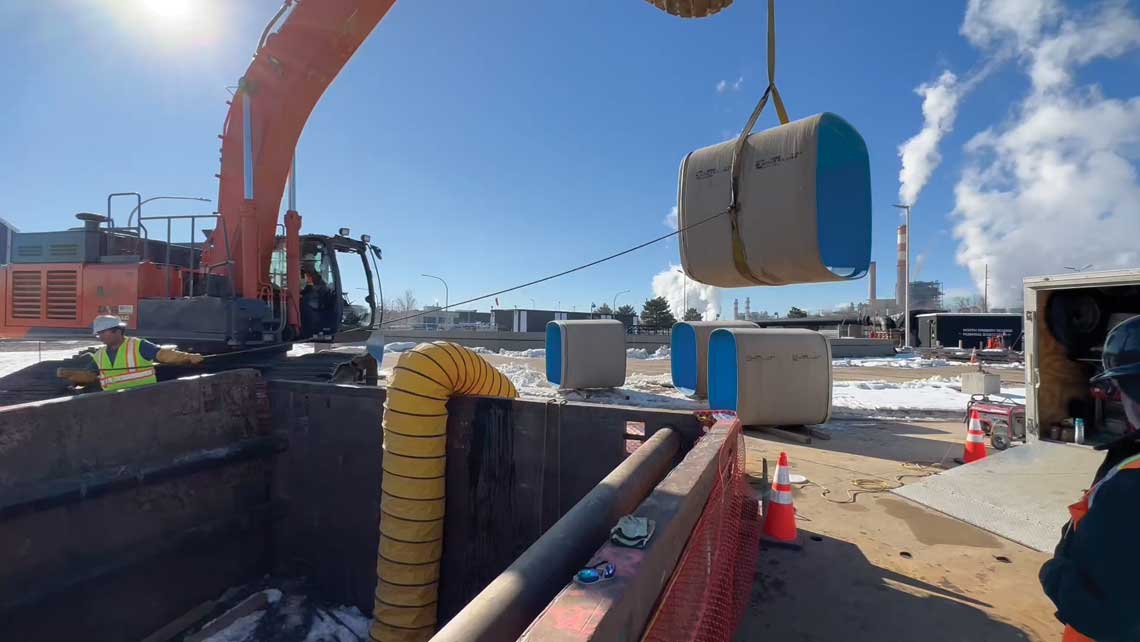
Metro primarily uses cured-in-place pipe (CIPP) and sliplining to rehabilitate 15,000 to 20,000 lf a year. Hofmeister notes that there may be instances where a pipe has a sag, pipe size, irregular shape, emergencies, utility conflict, staging limitations or challenges that limit Metro’s use of trenchless technology. In addition, Metro has a program to coat manholes and diversion structures with epoxy coating.
For new infrastructure or interceptors crossing major roads, tracks or ditches, the agency relies on various boring methods. “We recently completed 17 tunnels while constructing our new Second Creek Interceptor using the techniques of microtunneling, auger boring, hand-tunneling and tunnel boring machine,” Hofmeister says.
As a proponent of trenchless technologies, what does Hofmeister see as the biggest opportunities for utilities with regards to the upkeep of their systems?
“Trenchless technologies are getting better and better at helping us address more and more, while allowing us to work with smaller footprints, shorter timeframes, and less impact on the public,” he says. “This allows us to work around problems we have had in the past. Economically, rehab allows us to address and upgrade a larger number of aging pipes and manholes by a significant margin. This is significantly less expensive than building new infrastructure.”
Great Lakes Water Authority | Detroit, Michigan
Since formally beginning operations in 2016, the Great Lakes Water Authority (GLWA) continues to be the largest water and wastewater authority in the state of Michigan. It provides nearly 40 percent of Michigan’s population with clean and safe drinking water, as well as effective and efficient wastewater services to nearly 30 percent of the state.
The authority’s mission statement is to exceed its member partners’ expectations by utilizing best practices in the treatment and transmission of water and wastewater while promoting healthy communities and economic growth.
Wastewater conveyance and treatment services are provided to the City of Detroit and 19 member partners across 79 communities which is equivalent to 2.8 million people. GLWA also uses five water plants to treat and distribute finished drinking water to 88 member partners across 112 communities in eight southeast Michigan counties, which is equivalent to approximately 3.8 million people. Providing drinking water service requires more than 816 miles of large diameter transmission mains covering 1,698 square miles of service area.
When discussing the use of trenchless technologies in the North American water sector, members of GLWA’s Water and Field Services team note that the installation of small pipes using trenchless technologies allows the water service sector new opportunities to improve effectiveness and efficiency.
However, looking at its use of trenchless technologies, the respondents said that due to the size of its transmission and collection system, its pipeline project scope tends to be large and complex. This in turn impacts its selection of trenchless for the installation of large pipes because of size limitations and cost implications.
That does not mean that the GLWA doesn’t strategically use trenchless technologies. One of the biggest challenges it faces is the fact that the pipes are located in mature urban and suburban areas with complex networks of existing roads, infrastructure and underground utilities to navigate. So selecting the trenchless technologies needs to occur in a situation with the proper conditions. Take for instance the construction of a 5,000-lf transmission loop to improve system resiliency. GLWA included a 400-ft-long section of 24-in. ductile iron pipe installed using horizontal directional drilling to limit impacts to major road and highway crossings.
GLWA’s application of trenchless technology has also come “inside the fence” at its treatment plants. According to the Water and Field Services team, the Lake Huron Water Treatment Plant was able to more cost effectively replace segments of its water service line using a jack-and-bore method. The service line is used to provide water to chemical delivery systems, emergency showers and pump seal water at the plant. The plant was able to maintain service roads at the plant during construction and also maintain service to half the loop while new segments were put into place.
Often the heart of a good capital improvement plan is having high-quality and up-to-date data on system health. The core of this is a condition assessment plan. For its part, GLWA is currently working to identify and implement a cost-effective method of evaluating pipe condition and addressing issues prior to system interruption.
GLWA’s Linear System Integrity Program is an ongoing program to assess more than 100 miles of drinking water transmission pipelines and wastewater interceptors, the Water and Field Services team notes. The goal of this program is to cost effectively address and manage stress points in the system before they erupt.
Looking ahead, like many system owners in the United States specifically, the GLWA is encouraged by the recent spotlight infrastructure investment promises coming from the state and federal levels.
However, at the same time, the water sector is facing new challenges in the way of mandates pertaining to issues like revisions to both the state of Michigan and the U.S. Environmental Protection Agency’s Lead and Copper Rule and President Biden’s plan to address PFAS. These and other mandates, the respondents say, will compete for resources ranging from their time, money and talent pool. And that, on a national level, we need to carefully note and monitor how this affects our progress with aging infrastructure needs.
Richland County Government Utilities Department | Richland County, South Carolina
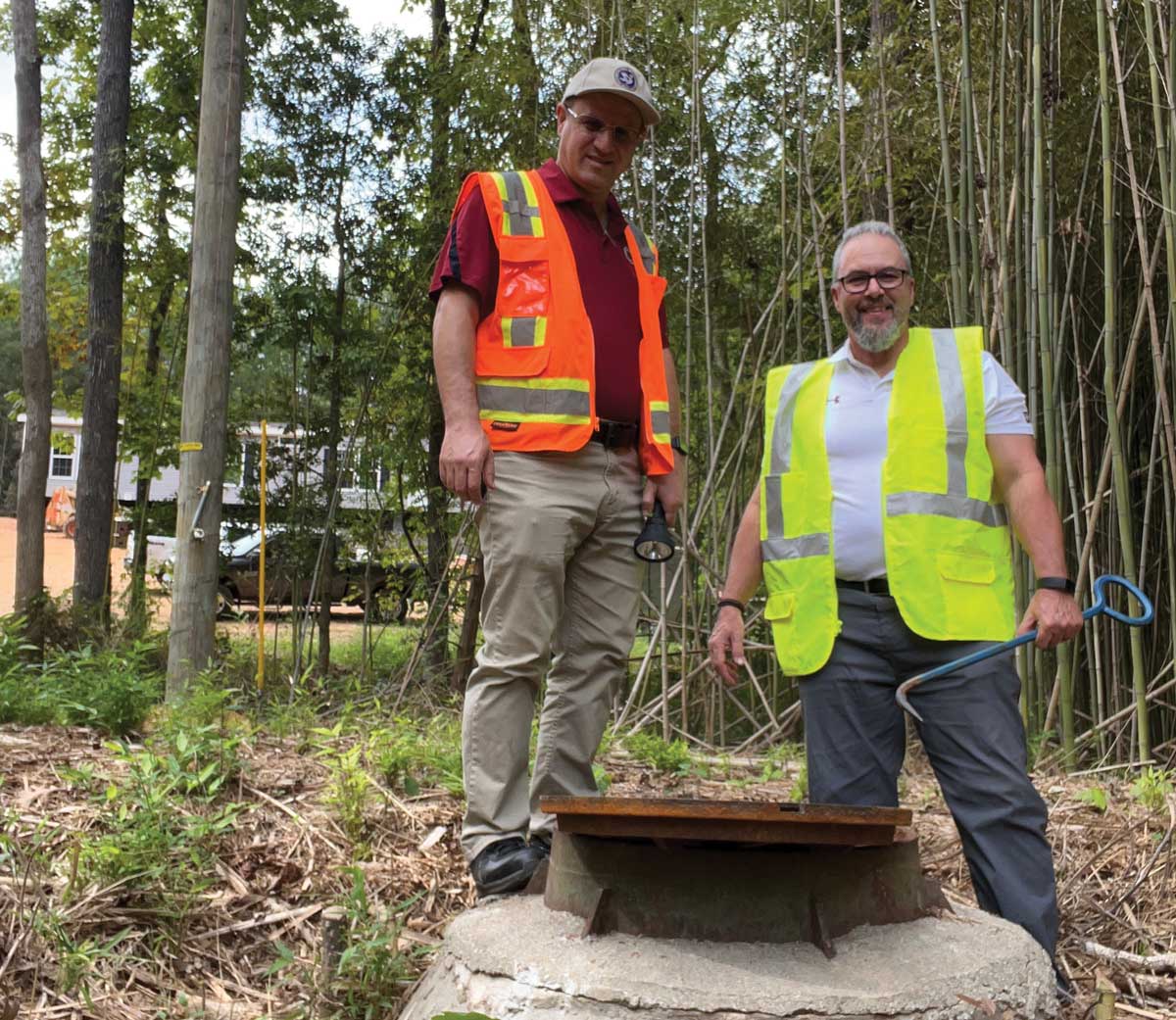
Richland County is the second largest county in South Carolina — and home to the state’s capital city of Columbia. As one of the major service providers in the county, taking care of its vital sewer infrastructure is the job of the Richland County Government’s Utilities Department.
In its care are approximately 300 miles of sewer lines, mostly consisting of PVC pipe, as well as some ductile iron pipes in its older sections of the system. In its Broad River Service area, the system handles 843,000 lf of gravity sewer lines, 324,000 lf of force main, 51,000 lf of gravity pressure lines, 5,000 manholes and 46 pump stations. In its Southeast Service area, there are 84,000 lf of gravity sewer lines, 242,000 lf of force mains, and 16 pump stations. In the past, the county has used a combination of full replacement, cured-in-place pipe (CIPP) and pipe bursting to address the ongoing upkeep of its sewer lines.
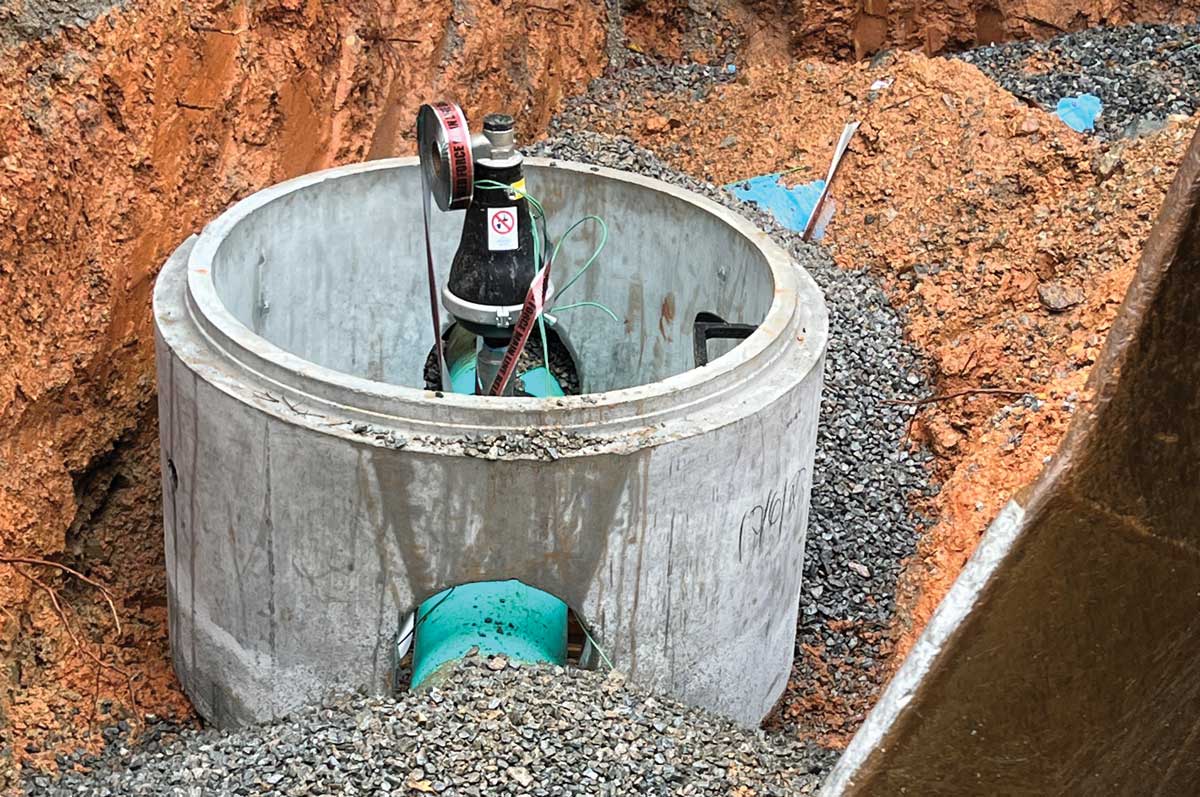
When addressing needed repairs and replacements, the Utilities Department has struggled — as utilities have across the country — with limited funding and staffing issues. Also, being a smaller utility, those areas loom even larger. “Funding is the primary reason we don’t rehabilitate more lines,” says utilities director Bill Davis. “We have several subdivisions that are in need of CCTV and pipe rating evaluations to determine a rehabilitation plan. We have purchased a CCTV truck and it is difficult to get the volume and quality of data needed in a timely fashion. With so many staff members having to perform multiple duties, it is difficult for smaller utilities to devote the staff time required to get projects completed on time.”
Among the specific issues the Richland County Utilities Department faces each day includes: pump maintenance (flushable wipes are not flushable), easement maintenance, repairs to fiber-optic damage, a rotating door when it comes to its workforce, funding for non-emergency rehabilitation work, the wear on staffing being on-call 24/7/365. When asked to discuss some of the key issues facing the Utilities Department from a regulatory and environment perspective, Davis points to unfunded EPA mandates, overall funding for capital projects and system expansion, ongoing supply chain issues and maintenance of its records and updating assets.
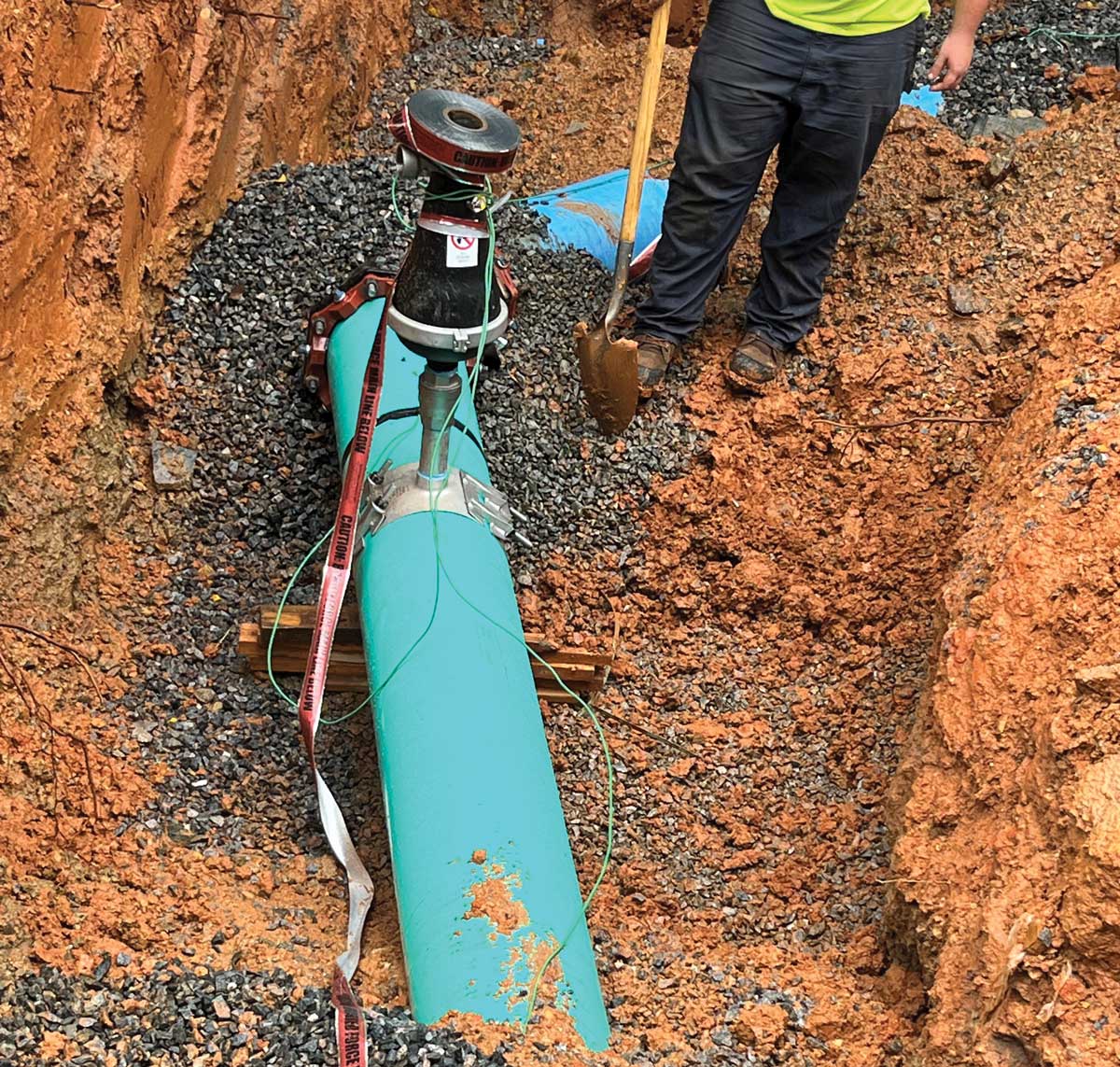
But Davis also sees positives among the daily trials. He specifically notes the solid master plans that correlate with the strategic growth plan for the system’s service area, its segmented Capital Improvement Plan (CIP) including work on large and small projects, as well as a robust GIS system that aids in prioritizing projects all help the system run efficiently and effectively.
Funding is an issue that runs through all cities and utilities to update, upgrade or replace its service lines. Most have welcomed the availability of the 2022 Infrastructure Investment and Jobs Act to assist in this work but there have been drawbacks in getting some projects funded.
“I think it is wonderful that there is more federal funding available,” Davis says. “However, when the market is flooded with trillions of dollars all at once, we see escalation of prices due to workforce shortages. With this much money, the contractors and vendors will choose the larger projects and because of supply and demand, their prices will be two to three times what they should be. This is also a factor in the materials and process equipment where we are seeing astronomical escalation in prices over the past few years. I believe this will be worse in the near future from the federal funding.”
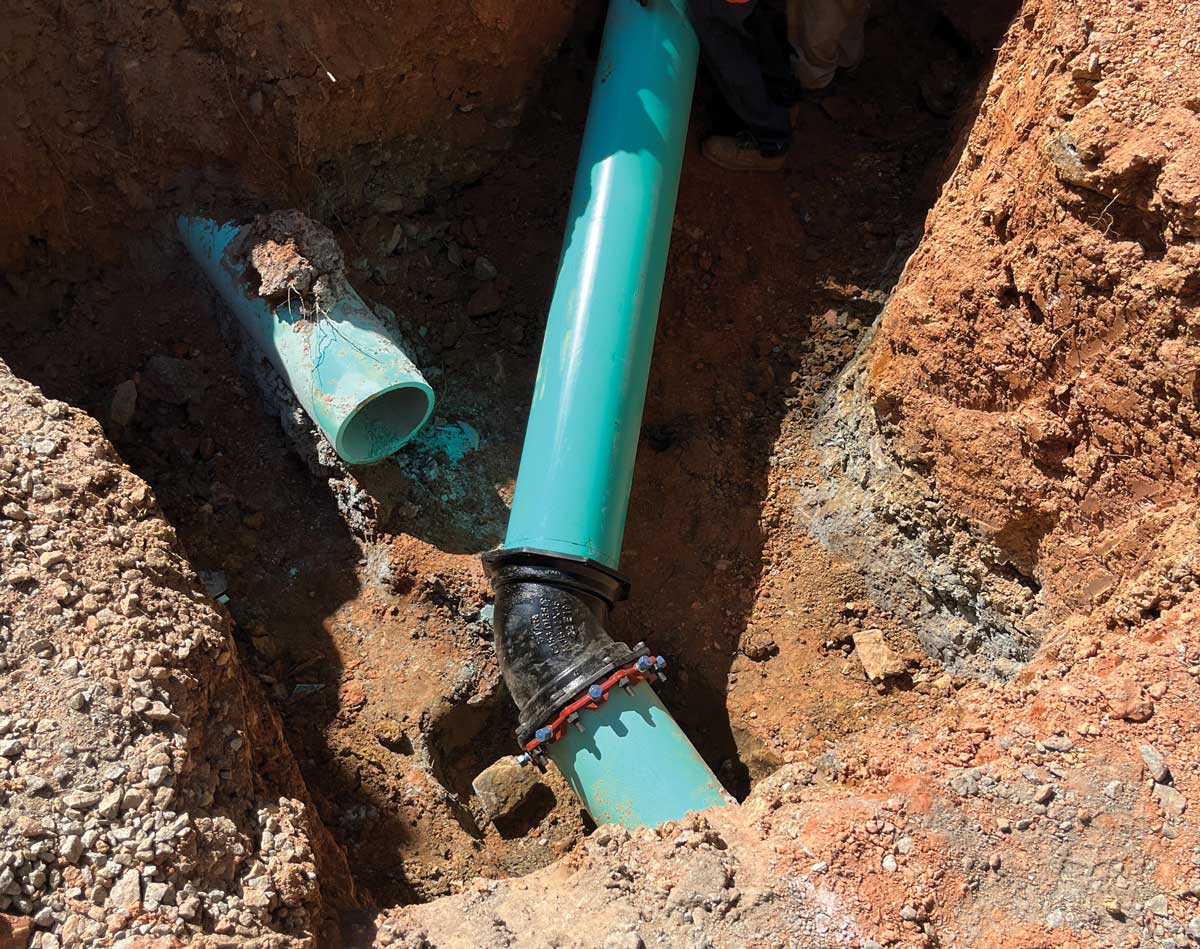
When talking about the state of our water and wastewater utilities, Davis offers a thoughtful perspective on what he is seeing and hearing from the utilities community. Funding is always at the top of list, as well as implementing the latest in technology (such as artificial intelligence) attracting and keeping quality workers. Finding and using the right and best products for their systems is also a challenge, he says.
“Many water systems are facing degradation at a rate that exceeds their ability to raise rates to cover the cost of repairs, maintenance, and rehabilitation. Funding for the systems is going higher and higher and the cost of services is soon going to reach the point where affordability is the biggest issue,” Davis says. “I think the federal government needs to provide a consistent stream of money for infrastructure improvements as opposed to massive intermittent sums dumped into the market all at once. That is counterproductive and diminishes the value of the dollars provided.
“Another factor is the quality of the products. We are seeing, in some cases, the quality of “low bid” products having a lifespan of less than 10 years, which doesn’t even allow us to cover all of the capital costs expended to purchase and install it. We recently replaced some mechanical equipment at our wastewater plant that only lasted two years and the service provider’s verdict was we needed complete replacement. We need to focus on training the next generation of water workers and make sure that we are using AI in every practical area so that we can efficiently utilize staff time in other more important areas.”
Houston Public Works | Houston, Texas
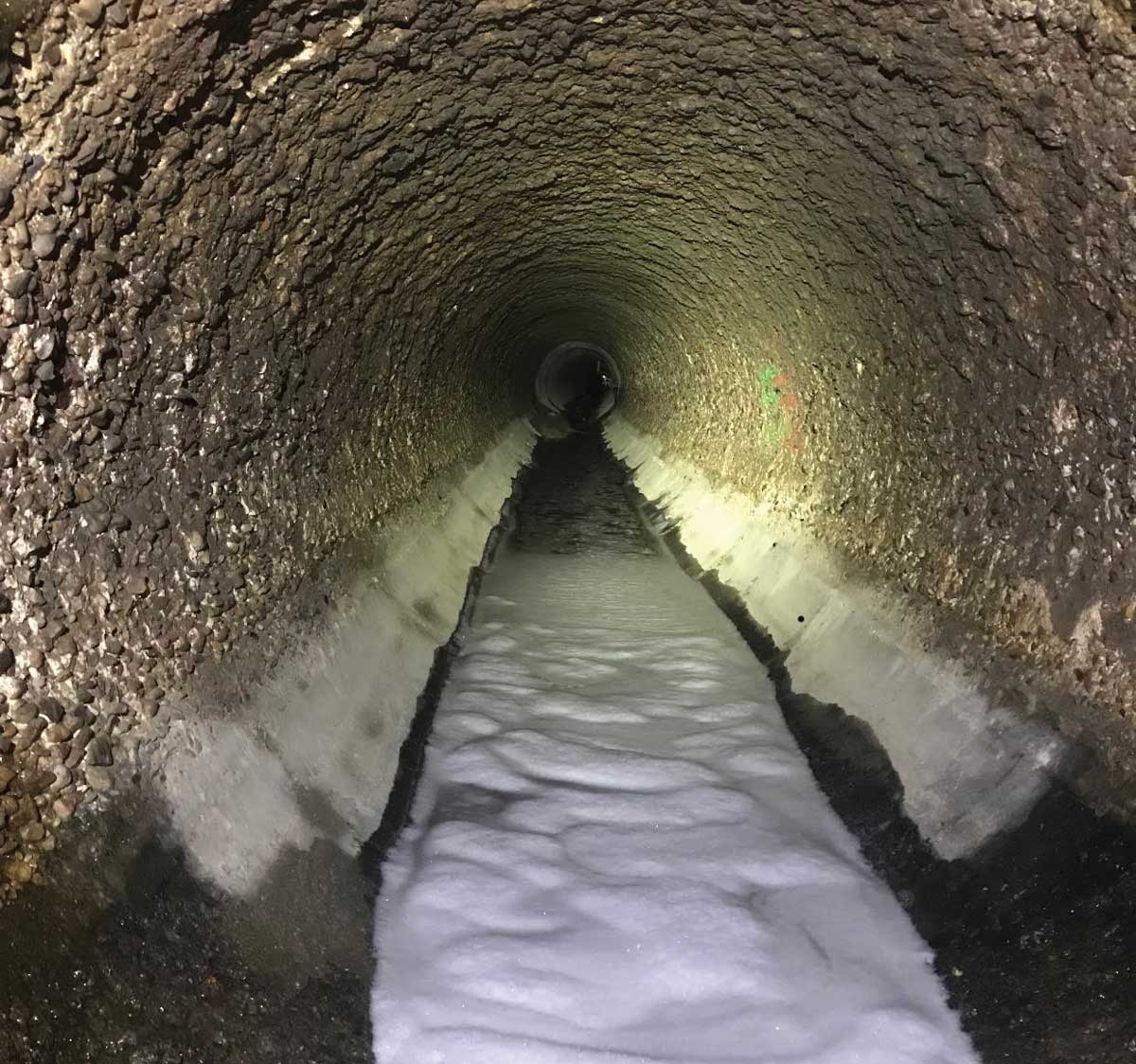
Keeping a wastewater collection system running at peak efficiency is no easy job. Over the years, the City of Houston’s Public Works Department has succeeded by incorporating several trenchless technologies to repair and update its aging system.
An early adopter of trenchless technology, Houston Public Works remains a committed and staunch proponent of the industry as it continues to confront the challenges of providing reliable services to its customers.
“Our committed and talented employees have made it possible for us to pursue forward-thinking while maintaining the existing system,” says Daniel Oefner, assistant director of wastewater operations at Houston Public Works. “I couldn’t be more proud of the determined spirit and resiliency on full display here at Houston’s Wastewater Operations Branch and honored to be working alongside the best staff.”
Houston’s wastewater collection system is more than 100 years old, installed in the early 1900s. The Houston Public Works wastewater service area covers 650 sq miles and includes approximately 5,900 miles of gravity sewers and 300 miles of sanitary force mains. The City’s use of trenchless methodologies includes new installation and rehabilitation. Trenchless installation of new sewers and force mains includes bore and jack, auger boring, microtunneling and horizontal directional drilling (HDD). On the rehabilitation side, techniques include sliplining, pipe bursting, cured-in-place pipe (CIPP), spincast and mechanical internal point repair.
“With its expansive wastewater system being in service for more than a century, Houston Public Works faces multiple challenges in keeping its system in working order for its customers daily,” says Raghavender Nednur, managing engineer at Houston Public Works. These challenges include recurring maintenance in some areas because of fats, oil and grease, accessibility issues, constructability challenges, repairs and renewal requirements because of outdated technology available at the time, and capacity issues due to inflow and infiltration. The City continuously bids work order type contracts for all required maintenance, repair and renewal work. There are also multiple large projects in the implementation and development stage to address capacity issues.
Among the big-picture challenges Houston Public Works faces include the following: funding issues due to rising inflation; personnel issues due to employees phasing into retirement; the retention of experienced employees and the non-availability of qualified candidates; shortage of available contractor crews; and difficult soil conditions that continue to change due to the climate, specifically extreme high temperatures and heavy rains causing cave-ins and sinkholes.
“The positive aspect of the wastewater collection and treatment is that the citizens, customers and the leadership are aware and understand that continuous effort and investment are required to maintain, renew and install the system,” Nednur says.
The Infrastructure Investment and Jobs Act (IIJA), which allows cities and utilities to apply for funding to assist in upgrading and upkeep these vital systems, has generally been positive; however, in specific locations, it has resulted in challenges.
“In locations where it is financially feasible to include sanitary sewer improvements to meet the current standards, the results are positive because including in the project costs less than the improvements,” Nednur says. “In all other situations, maintaining the existing outdated system with limited to no improvement in operation can be costly over the long term. In these situations, if work has to be performed in the future, the costs to improve much more outdated infrastructure can substantially increase costs.”
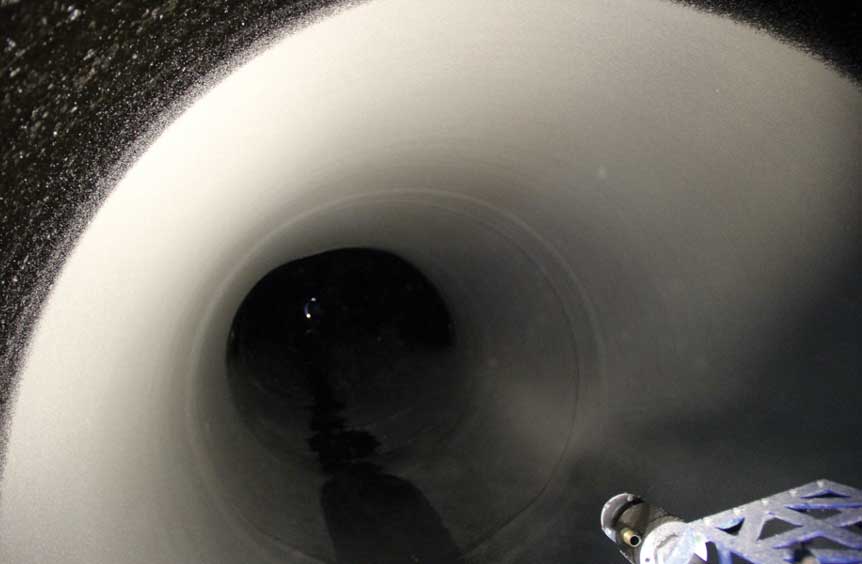
Nednur says that for Houston Public Works and other utility providers to continue to run smoothly and stronger, it comes down to three critical areas: capital investment, talented personnel and increased utilization of technology. In the case of capital investment, he says he believes there needs to be a second phase of the IJJA to adequately fund water distribution and wastewater collection. Maintaining the status quo is not enough. Utilities must tap into and use the latest technologies, such as artificial intelligence, machine learning and data analytics.
“There is a need for comprehensive change in our perspective from maintaining and gradually improving the infrastructure, which is below the current standards, to expeditiously improving to meet the current standards,” Nednur says. “All the surrounding infrastructure and ground conditions are changing, and the ability to implement required improvements could be substantially difficult as it gets delayed.”
He also notes how critical it is for utilities to find, locate and keep qualified personnel to operate and guide the future of these systems. “As we lose experienced personnel from the field because of retirement and people pursuing different avenues, the need for personnel training is urgent and large. Substantial effort is being expended currently to address this,” Nednur says. “However, a nationwide understanding and effort by the regulatory agencies can provide the impetus required for the large cities and small towns to ensure continuity in having talented personnel. This is a significant component of ensuring the population’s health and safety is not negatively affected.

